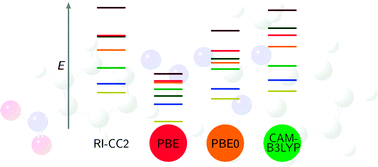A simple diagnostic test based on orbital overlap [M. J. G. Peach et al., J. Chem. Phys., 2008, 128, 044118] may be used to help judge the reliability of excitation energies in time-dependent density functional theory (TDDFT) when using generalized gradient approximation (GGA) and hybrid functionals. Orbital plots are used to illustrate the test for a model tripeptide and for 4-(N,N-dimethylamino)benzonitrile, which are representative of systems containing low- and high-overlap charge-transfer excitations. The scheme is then applied to a series of triazene chromophores in solvent, highlighting the relationship between overlap and oscillator strength and its implications for theoretical absorption spectra. No low-overlap excitations are observed with a hybrid functional; a single one is identified using a GGA. To assess the diagnostic test and to judge functional performance, gas phase triazene TDDFT excitations are compared with correlated ab initio values. The diagnostic test correctly identifies two low-overlap problematic GGA excitations. However, it does not identify another problematic excitation where the electron is excited to a spatially extended orbital, which necessarily has reasonable overlap with the occupied orbital; an improved diagnostic quantity is required for such cases. The best agreement between TDDFT and correlated ab initio excitations is obtained using a Coulomb-attenuated functional; the errors are significantly smaller than from the GGA and hybrid functionals. The study provides further support for the high quality excitations from Coulomb-attenuated functionals, negating the need for diagnostic tests.

You have access to this article
 Please wait while we load your content...
Something went wrong. Try again?
Please wait while we load your content...
Something went wrong. Try again?


 Please wait while we load your content...
Please wait while we load your content...